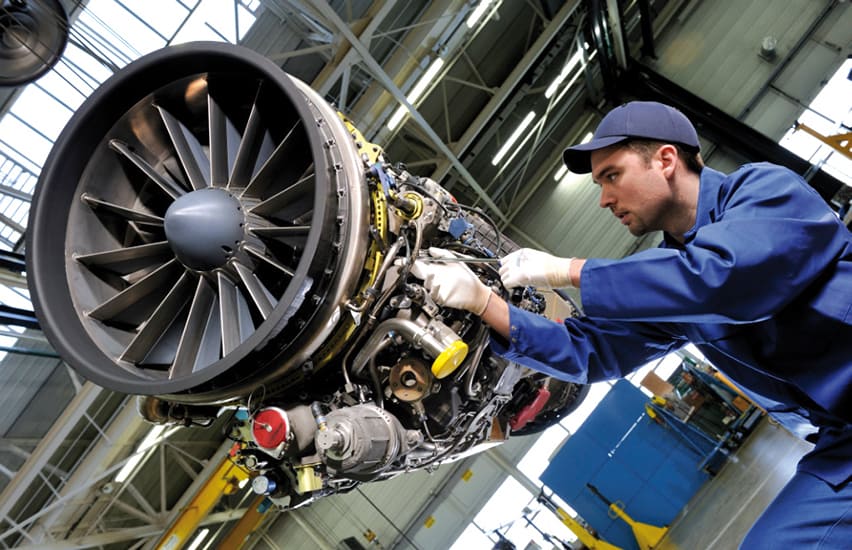Introduction to Industrial Maintenance and Fabrication
Industrial maintenance and fabrication are critical components of any manufacturing or production facility. Maintenance involves the regular upkeep and repair of machinery to ensure it operates efficiently and safely. Fabrication, on the other hand, involves constructing or assembling machine parts and structures from raw materials. Together, these processes help in minimizing downtime, enhancing productivity, and extending the lifespan of equipment.
Understanding Industrial Maintenance
Industrial maintenance and fabrication encompasses a wide range of activities, including routine inspections, lubrication, adjustments, repairs, and overhauls. It aims to ensure that machinery and equipment are in optimal working condition, thus reducing the risk of unexpected failures. Effective maintenance strategies can significantly improve operational efficiency, safety, and profitability.
The Role of Fabrication in Maintenance
Fabrication plays a crucial role in industrial maintenance by providing custom solutions to specific equipment needs. Whether it’s creating replacement parts, modifying existing components, or designing new machinery, fabrication helps in maintaining and enhancing the performance of industrial systems. AAA Fabrication Group specializes in delivering high-quality fabrication services tailored to meet the unique requirements of each client.
The Importance of an Effective Maintenance Plan
An effective industrial maintenance plan is vital for several reasons:
- Minimizes Downtime: Regular maintenance prevents unexpected breakdowns.
- Enhances Safety: Well-maintained equipment reduces the risk of accidents.
- Increases Efficiency: Optimal functioning of machinery ensures smooth operations.
- Cost Savings: Preventive maintenance is often less costly than major repairs or replacements.
- Prolongs Equipment Life: Regular care extends the lifespan of machinery.
Key Components of an Industrial Maintenance Plan
1. Preventive Maintenance
Preventive maintenance involves routine inspections, servicing, and minor repairs to prevent major issues. This proactive approach helps in identifying potential problems before they escalate, ensuring uninterrupted operations.
Benefits of Preventive Maintenance
- Reduced Downtime: By addressing issues early, preventive maintenance minimizes the risk of unexpected equipment failures.
- Extended Equipment Life: Regular maintenance prolongs the lifespan of machinery by preventing wear and tear.
- Cost Efficiency: Preventive maintenance is generally less expensive than corrective maintenance, which involves significant repairs or replacements.
2. Predictive Maintenance
Predictive maintenance uses data analysis and monitoring tools to predict when equipment is likely to fail. By analyzing patterns and trends, maintenance can be scheduled just in time, avoiding unnecessary downtime.
Technologies Used in Predictive Maintenance
- Vibration Analysis: Monitoring vibrations can help detect imbalances, misalignments, or wear in rotating machinery.
- Thermography: Infrared cameras detect heat patterns, identifying potential issues like overheating components.
- Ultrasonic Testing: This technique detects changes in sound waves, helping identify problems in machinery and electrical systems.
3. Corrective Maintenance
Corrective maintenance is performed after a fault is detected. While this is often seen as a reactive approach, it is essential for addressing unforeseen issues that could impact production.
When to Use Corrective Maintenance
- Unexpected Failures: When equipment fails unexpectedly, immediate corrective actions are necessary to restore operations.
- Post-Preventive Maintenance: Sometimes, despite preventive measures, issues may arise that require corrective maintenance.
Steps to Develop an Industrial Maintenance Plan
➤ Assess Current Maintenance Practices
Begin by evaluating your existing maintenance practices. Identify strengths and weaknesses, and gather data on equipment performance, downtime, and maintenance costs.
➤ Conducting a Maintenance Audit
- Review Maintenance Records: Examine past maintenance activities to identify patterns and areas for improvement.
- Inspect Equipment: Perform a thorough inspection of all machinery to assess its current condition.
- Interview Staff: Gather insights from maintenance personnel to understand challenges and opportunities for enhancement.
➤ Set Clear Objectives and Goals
Define what you aim to achieve with your maintenance plan. Objectives might include reducing downtime, improving safety, cutting costs, or extending equipment life.
Examples of Maintenance Goals
- Reduce Downtime by 20%: Implement strategies to decrease unplanned downtime.
- Increase Preventive Maintenance: Shift focus from corrective to preventive maintenance by a certain percentage.
- Enhance Safety Compliance: Ensure all equipment meets safety standards and regulations.
➤ Develop a Maintenance Schedule
Create a detailed maintenance schedule that outlines routine inspections, servicing, and major overhauls. Ensure that the schedule is realistic and considers the availability of resources.
Elements of a Maintenance Schedule
- Task Frequency: Determine how often each maintenance task should be performed (daily, weekly, monthly, etc.).
- Assigned Personnel: Assign specific tasks to qualified maintenance staff.
- Resource Allocation: Ensure necessary tools, parts, and materials are available for each task.
➤ Allocate Resources and Budget
Determine the resources required for your maintenance activities, including personnel, tools, and materials. Allocate a budget that covers both routine and emergency maintenance needs.
Budgeting for Maintenance
- Labor Costs: Account for wages, training, and overtime for maintenance staff.
- Material Costs: Include the cost of spare parts, lubricants, and other consumables.
- Equipment Costs: Budget for tools and diagnostic equipment necessary for maintenance activities.
➤ Implement Maintenance Management Software
Utilize maintenance management software to streamline and automate your maintenance processes. This software can help in tracking work orders, scheduling tasks, and maintaining records.
Benefits of Maintenance Management Software
- Improved Organization: Centralize maintenance data and schedules in one platform.
- Enhanced Tracking: Monitor the status of maintenance tasks and equipment health.
- Data Analysis: Analyze maintenance data to identify trends and make informed decisions.
Maintenance Schedule Example
| Equipment | Task | Frequency | Responsible Person | Comments |
|---|---|---|---|---|
| Conveyor Belt | Inspect & Lubricate | Monthly | Maintenance Team | Check for wear and tear |
| Hydraulic Press | Replace Filters | Quarterly | Maintenance Supervisor | Use OEM parts |
| CNC Machine | Calibration | Bi-Annual | Technician | Ensure precision |
| Cooling System | Clean & Test | Monthly | Maintenance Team | Check for leaks |
| Generator | Full Service | Annual | External Contractor | Follow service manual |
Best Practices for Industrial Maintenance and Fabrication
- Regular Training: Ensure your maintenance team is well-trained and up-to-date with the latest techniques.
- Use Quality Parts: Always use high-quality parts and materials to ensure longevity.
- Document Everything: Keep detailed records of all maintenance activities and inspections.
- Stay Organized: Use tools and software to keep track of schedules and tasks.
- Prioritize Safety: Never compromise on safety standards during maintenance and fabrication.
Importance of Regular Training
Continuous training ensures that maintenance personnel are familiar with the latest industry standards, safety protocols, and technological advancements. Investing in training can improve the efficiency and effectiveness of your maintenance team.
➤ Using Quality Parts
Using high-quality parts and materials can significantly reduce the frequency of repairs and replacements. While it may involve a higher initial cost, the long-term benefits in terms of durability and performance outweigh the expenses.
➤ Documentation and Record Keeping
Maintaining accurate records of all maintenance activities helps in tracking equipment performance, identifying recurring issues, and planning future maintenance tasks. Documentation also supports compliance with industry regulations.
Common Challenges and How to Overcome Them
- Resource Constraints: Allocate budget and resources effectively to avoid shortages.
- Unplanned Downtime: Use predictive maintenance to anticipate and prevent unexpected failures.
- Skill Gaps: Invest in regular training and development programs for your maintenance team.
- Data Management: Implement a robust system for data collection and analysis to make informed decisions.
➤ Addressing Resource Constraints
Efficient resource allocation requires careful planning and prioritization. Identify critical equipment and prioritize maintenance tasks accordingly. Consider outsourcing certain maintenance activities to specialized service providers if internal resources are limited.
➤ Reducing Unplanned Downtime
Predictive maintenance techniques, such as vibration analysis and thermography, can help in identifying potential issues before they lead to equipment failure. By scheduling maintenance activities based on data-driven insights, you can minimize unplanned downtime.
➤ Bridging Skill Gaps
Skill gaps can be addressed through regular training programs, workshops, and certifications. Encourage continuous learning and provide opportunities for maintenance staff to enhance their skills and knowledge.
➤ Improving Data Management
Implementing a computerized maintenance management system (CMMS) can streamline data management processes. A CMMS allows you to track maintenance activities, store equipment data, and generate reports for analysis and decision-making.
What is the Best Material for Gate Fabricator?
Short FAQs
Q-1 What is industrial maintenance and fabrication?
Industrial maintenance involves the upkeep and repair of machinery, while fabrication refers to the construction of machine parts and structures from raw materials.
Q-2 Why is preventive maintenance important?
Preventive maintenance helps in identifying and addressing potential issues before they cause major disruptions, thus minimizing downtime and repair costs.
Q-3 How often should maintenance be performed?
The frequency of maintenance depends on the type of equipment and its usage. Typically, inspections and minor servicing are performed monthly or quarterly, while major overhauls might be annual.
Q-4 What tools are used in industrial maintenance?
Common tools include wrenches, pliers, screwdrivers, lubricants, and specialized diagnostic equipment.
Q-5 How can I improve my maintenance plan?
Regularly review and update your maintenance plan, invest in training, and use maintenance management software to streamline processes.
Contact Us
For more information on developing an effective industrial maintenance plan or for professional assistance, contact AAA Fabrication Group at 0417 454 632. Our team of experts is ready to help you ensure the optimal performance and longevity of your machinery.
Developing an effective industrial maintenance plan is crucial for the seamless operation of any manufacturing or production facility. By following the steps and best practices outlined in this guide, you can minimize downtime, enhance safety, and extend the lifespan of your equipment. Partner with AAA Fabrication Group for expert guidance and support in all your industrial maintenance and fabrication needs.



